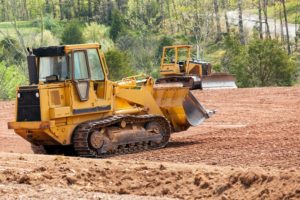
When construction projects require the creation of a sturdy and stable base, crews can use a variety of fill materials to create a firm foundation. While there are many materials available, fill dirt and sand are some of the most common. How do contractors decide which material to use? Well, dirt and sand each have strengths and weaknesses that make them appropriate for certain projects and not others. In this blog, we will go over the basics of fill dirt and sand, the benefits and drawbacks of each material, and what projects are best suited for fill dirt or sand use.
Basics of Fill Dirt and Sand
Fill dirt and sand are both materials that are harvested from the earth for use in construction, but they are very different in their composition and physical properties. Fill dirt has very little organic matter or biological activity, which means that it will not shift or decompose over time. Dirt is excavated from deep underneath topsoil and fertile soil. On the other hand, sand is made of minuscule particles of rock that have been broken down over time. Like fill dirt, sand has a high compaction rating, which means that it can be compacted to make a dense and stable foundation. Unlike dirt, sand is made of rounded and hard particulates that can be displaced or shifted.
Solid Foundations
While it is not ideal for every situation, dirt is often the best choice for creating a compacted foundation for things like roads and buildings. For these projects, having an entirely unmovable base is vital. Because of its ability to be displaced, sand is generally inappropriate for these types of projects. Fill dirt can also be used in landscaping projects. Dirt is a versatile fill material and can be used to level out dips or hills, build up a landscape, or occupy the areas around underground pipes.
Projects in Wet Environments
Dirt is great for creating solid, unmovable foundations in dry places, but it tends to absorb and retain moisture when used in wet areas. Wet environments are where sand truly excels. Sand does not absorb water; it merely allows it to pass through. This makes sand ideal for applications in damp environments. Sand is often used for fill material in and around ponds, septic tanks, and other damp areas.
ABOUT RELIABLE CONTRACTING
Reliable is dedicated to delivering quality products, displaying professionalism within the firm, seeking new opportunities for expansion and profitability, and providing an environment for individual success. If you have a commercial or residential construction project that you need taken care of, please contact Anne Arundel County’s largest site-work contractor today by calling 410-987-0313 or visiting our website. You can also follow Reliable Contracting on Facebook, LinkedIn, Pinterest, and Twitter!
Reliable Contracting Company serves the following and surrounding counties: Annapolis, Queen Anne’s, Anne Arundel, Baltimore, Baltimore City, Calvert, Caroline, Charles, Howard, Prince George, St. Mary’s, Talbot, and Washington D.C.
